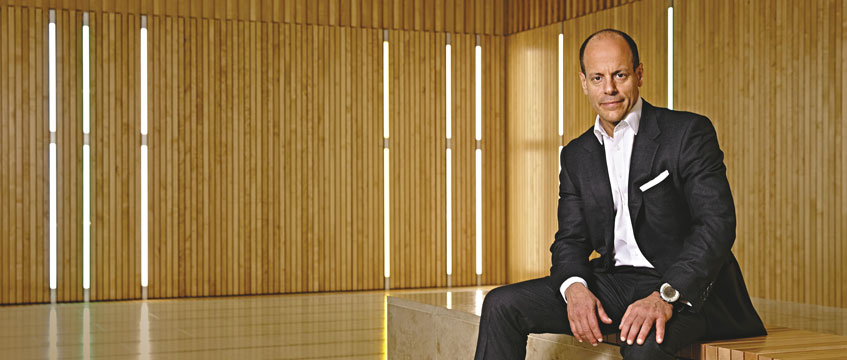Retail and leisure is now a familiar combination of uses on edge-of-town and out-of-town and sites across the country. Denis Hall profiles one such scheme in Bristol and assesses developer Wilson Connolly’s strategy for this location.
When the Bristol Development Corporation invited bids for two sites to the south east of the city centre for redevelopment as retail schemes, Wilson Connolly’s Howard Morris did not hesitate. “The sheer scale of this opportunity suited our forte as a company which dealt with big schemes,” he explains.
And thanks to the announcement of infrastructure work now under way, the market appeal of these two plots of land – totalling 26.5 acres – had increased greatly. As of autumn 1994, the sites will front the BDC’s £25m spine road which provides a dual-carriageway link from the M32 to the A4 Bath Road.
Morris explains the significance of this new route. “At present, the main route into Bristol from the M4 is the M32, where you join a long queue of traffic and fight your way around the Bristol ring road.”
The spine road should siphon off traffic heading south. “As a result,” predicts Morris, “there should be 43,500 vehicles a day passing our door.”
On the back of this dramatic upsurge in potential customer numbers, Wilson Connolly has grand plans. And, as the developer made clear to the BDC, its bid was conditional upon detailed planning permission for the £50m scheme it wanted.
“The BDC had granted itself a foodstore consent on Castle Court and a retail and leisure consent on the Avon Meads site,” recalls Morris. “But we also wanted non-food retail on Castle Court.”
Devoting Castle Court entirely to food would have been a mistake, he suggests. “We explored the interest of main foodstore retailers in this location, but they displayed only limited interest. Foodstore provision is OK around Bristol.”
Recent events elsewhere in the country had also prompted some interesting inquiries which Morris is keen to take up. Discount warehouse operators such as Costco and Cargo Club are eager to get a foothold in Bristol and see this location as perfect for their needs.
Even more gratifying has been the interest expressed in the scheme by at least one well-known High Street retailer. If this deal goes through, at least 40,000 sq ft of what was planned as a retail warehouse scheme will look decidedly upmarket. “The occupier will spend more money on the fit-out of its unit to give it a High Street feel,” says Morris.
In July, after a period of negotiation, Wilson Connolly received detailed consent for both sites. The 20-acre Avon Meads site is to be redeveloped as a 14-screen multiplex cinema (to be run by American National Amusements’ UK subsidiary, Showcase Cinemas), a 26-lane bowling alley, up to 117,000 sq ft of non-food retail, a theme pub/restaurant, and two fast-food restaurants. The 6.5-acre Castle Court site is to be developed as 75,000 sq ft of non-food and food retailing. In total, consent has been granted for over 2,050 parking spaces on both sites. The agent responsible for marketing this tempting combination of uses is King Sturge & Co.
Leisure is intended to play an important role in establishing the site in this market, says Morris. “Leisure creates mass and identity: if people are used to identifying a location as a leisure destination, then persuading them to do their shopping there will be that much easier.”Retailers seem to agree with this thinking: “Unusually, retailers are basing much of their assessment of the site’s appeal on the leisure element.”
Similarly, caterers have wasted no time in acquiring a stake in this location. Terms have already been agreed with McDonald’s and Deep Pan Pizza for the Avon Meads site’s two fast-food units. Most recently, TGI Friday has agreed to take the restaurant site by Avon Meads’ main entrance.
Future social trends for the 350,000 people living within a 10-minute drive time who this scheme will serve perhaps explain this enthusiasm. Between 1991 and 1996, bulky durable goods expenditure within a 10- to 15-minute drive time is set to grow by 4.13% (from £277.75m to £342.74m). An additional 950 houses are expected to be completed on two residential sites in the Avon Valley, within a mile of Avon Meads, by 1996. Latest research on the make-up of the Avon population shows that 80% are in the professional to skilled socio-economic groups. The considerable spending power which this last statistic suggests is especially important if evidence from other studies is accepted, in which it is indicated that customers will drive for up to an hour if “the draw” is sufficiently attractive.
These predictions will be tested in two years’ time. Under the terms of the development agreement with the BDC, Wilson Connolly is committed to completing the development by early 1995. The stakes are high. If the scheme is a success, it will be the first that the city’s retail sector has seen for a long time.
For the city centre itself, a successful out-of-town development – as the High Street retailer interest in Avon Meads and Castle Court already demonstrates – promises only to compound existing problems. Broadmead, developed in the 1950s, has traditionally dominated the central area. But there is a widespread perception that the complex is failing to provide the sort of space which retailers require. In addition, local government’s persistent failure to solve Bristol’s serious traffic congestion continues to reduce its appeal as a retail centre.
Given this situation, Bristol’s first covered shopping centre, the Galleries, should have been a roaring success. But Norwich Union’s 320,000-sq ft scheme, which opened in October 1991, has failed to perform as well as might have been expected. About 80% of the scheme is occupied. While Hartnell Taylor Cook denies that big incentives are on offer, market rumour suggests that packages equivalent to two years rent-free have been agreed.
Until now, those who have a commitment to the city centre have been most concerned at the growth of retail warehousing at Cribbs Causeway, which is close to junction 17 of the M5. In particular, fears have focused on the progress of J T Baylis and Prudential’s 650,000-sq ft proposal for a regional shopping centre here.
Ironically, for the next few years certainly, they might have been looking in the wrong direction. Prudential has made it clear that it wants to have Cribbs Causeway up and running by 1997. But, as Morris is only too happy to point out, this schedule gives Wilson Connolly’s scheme two years in which to stake its claim to a share of the southern half of the city’s out-of-town retail market.










